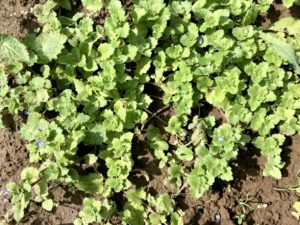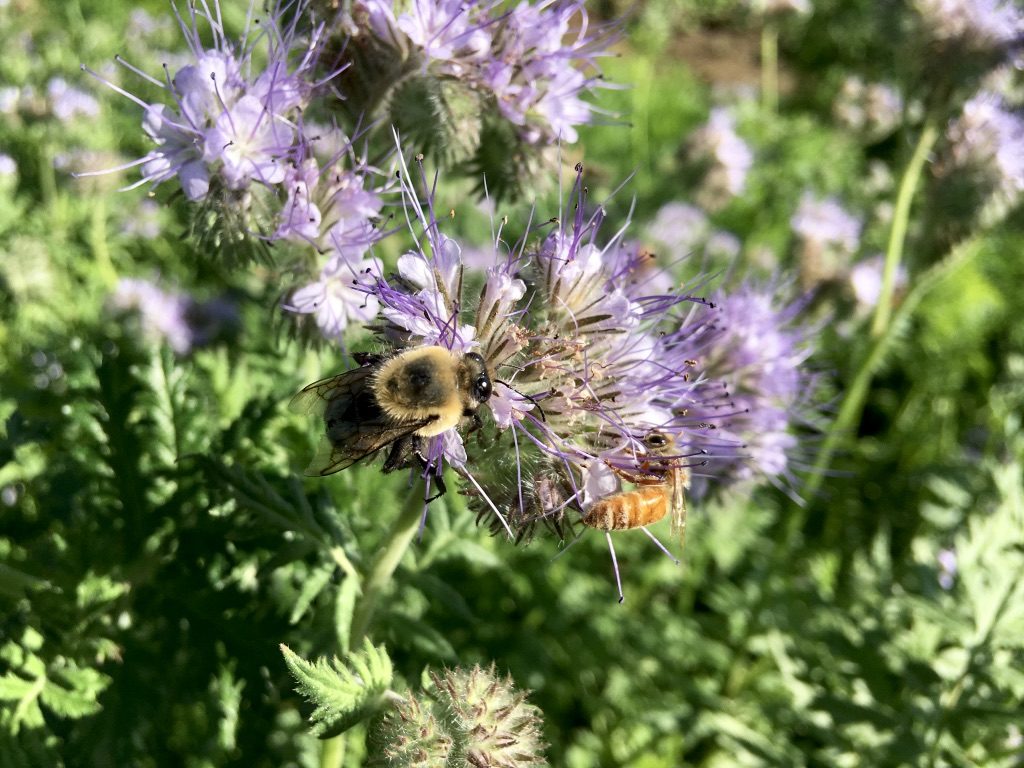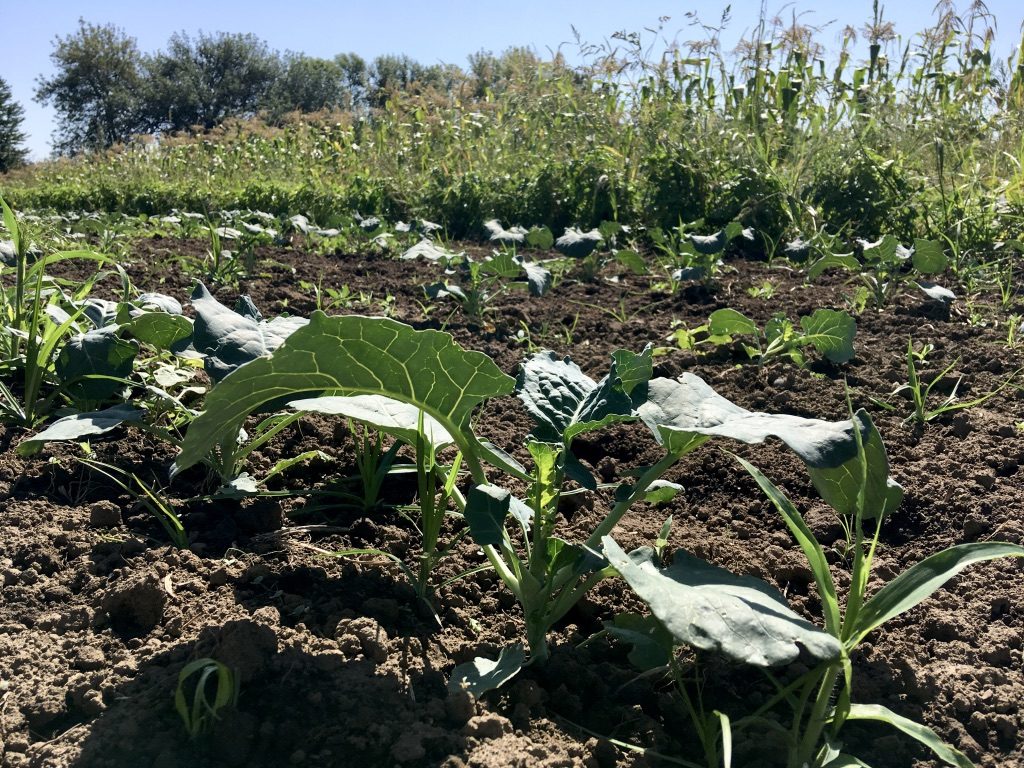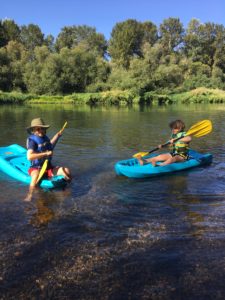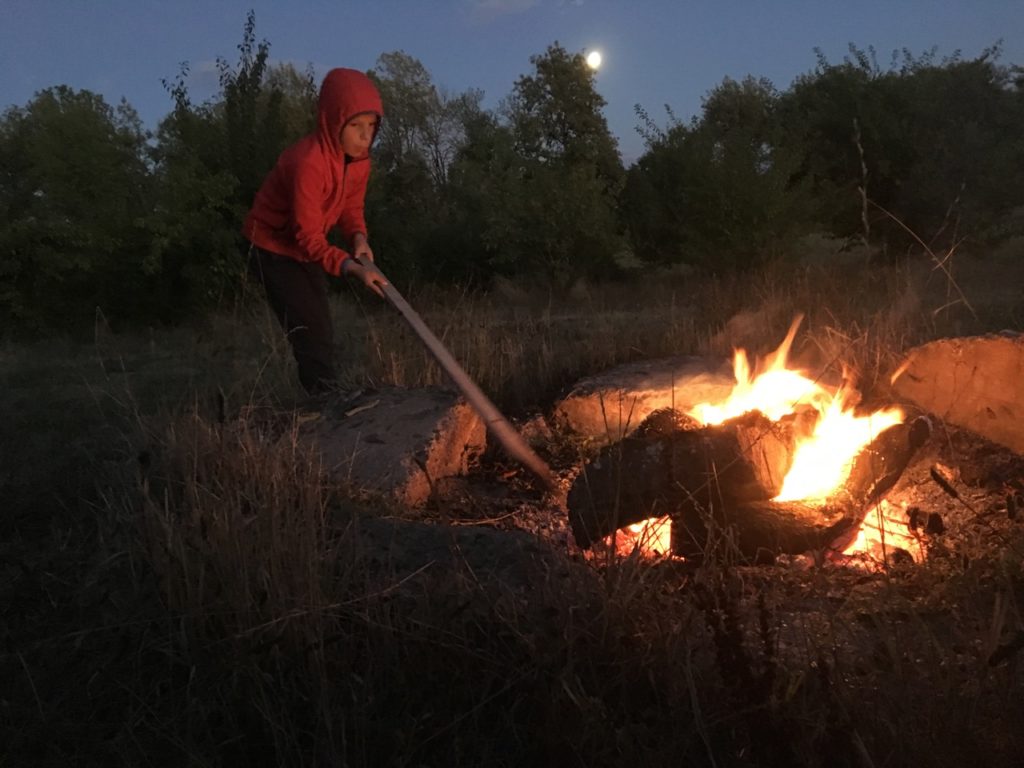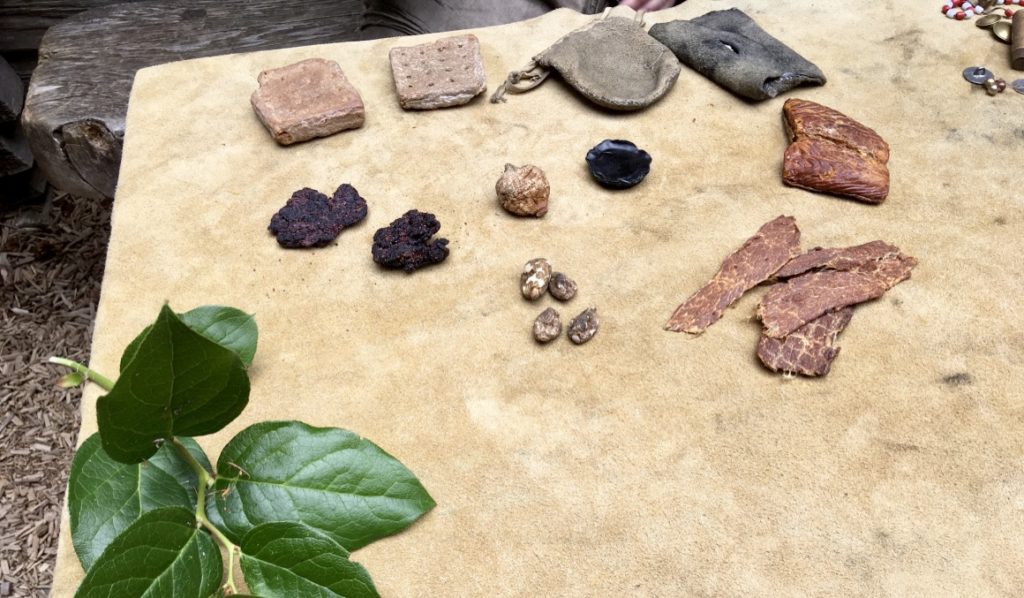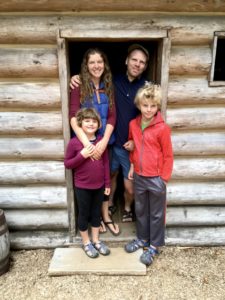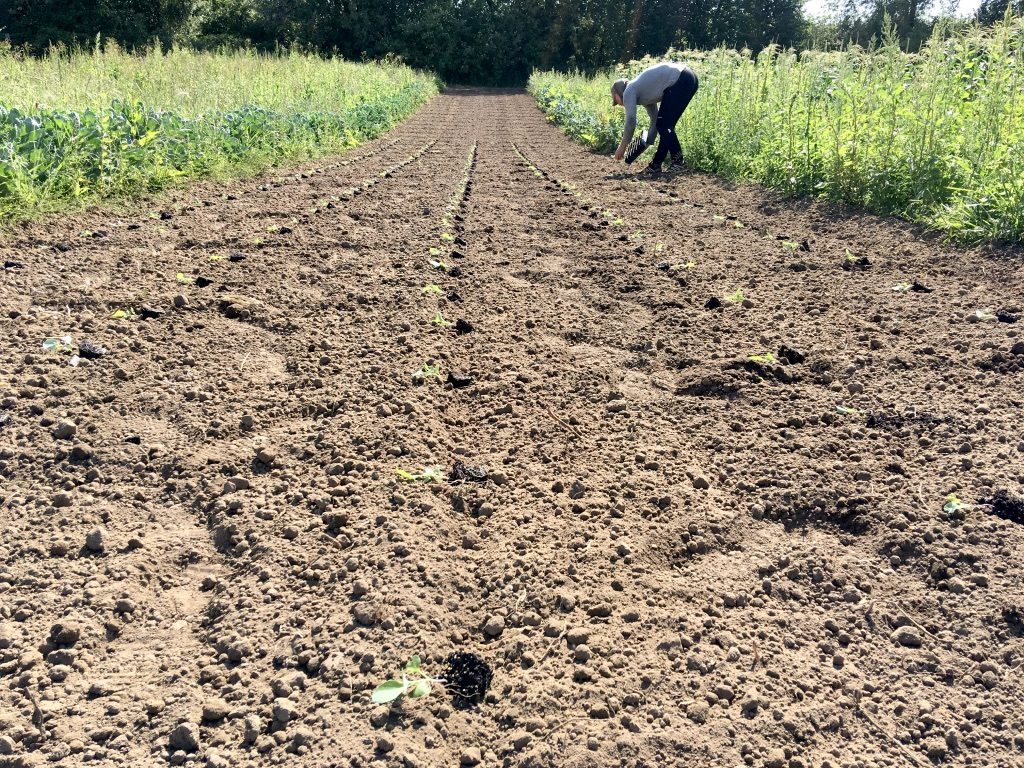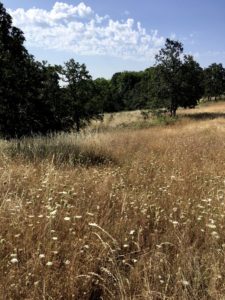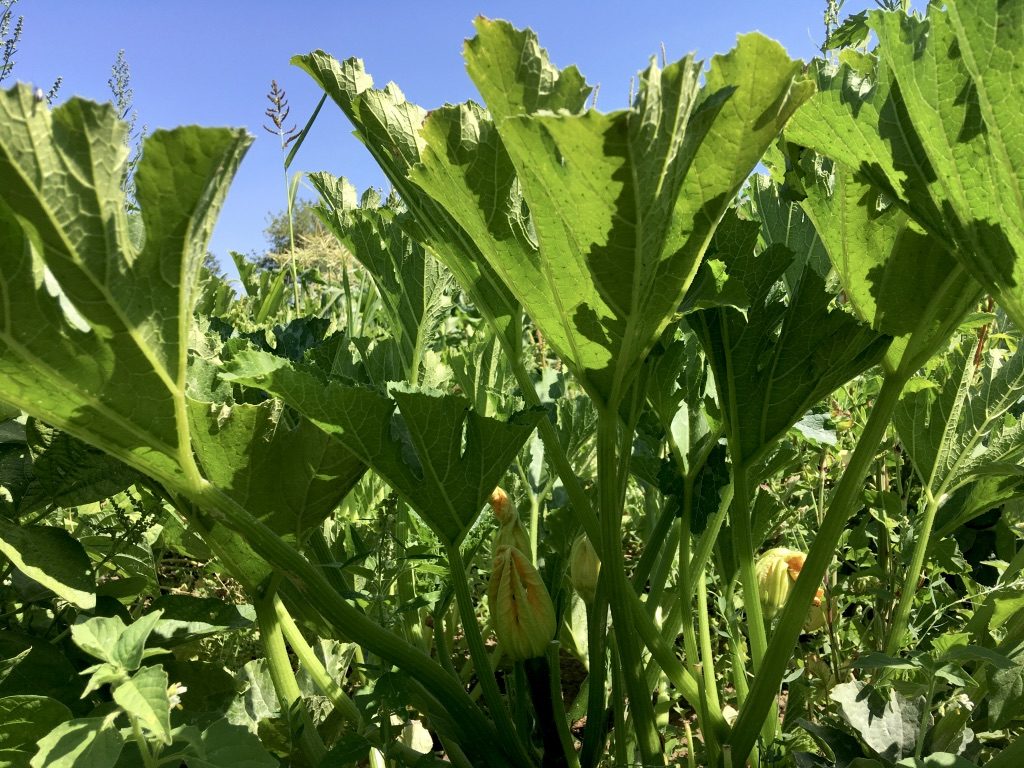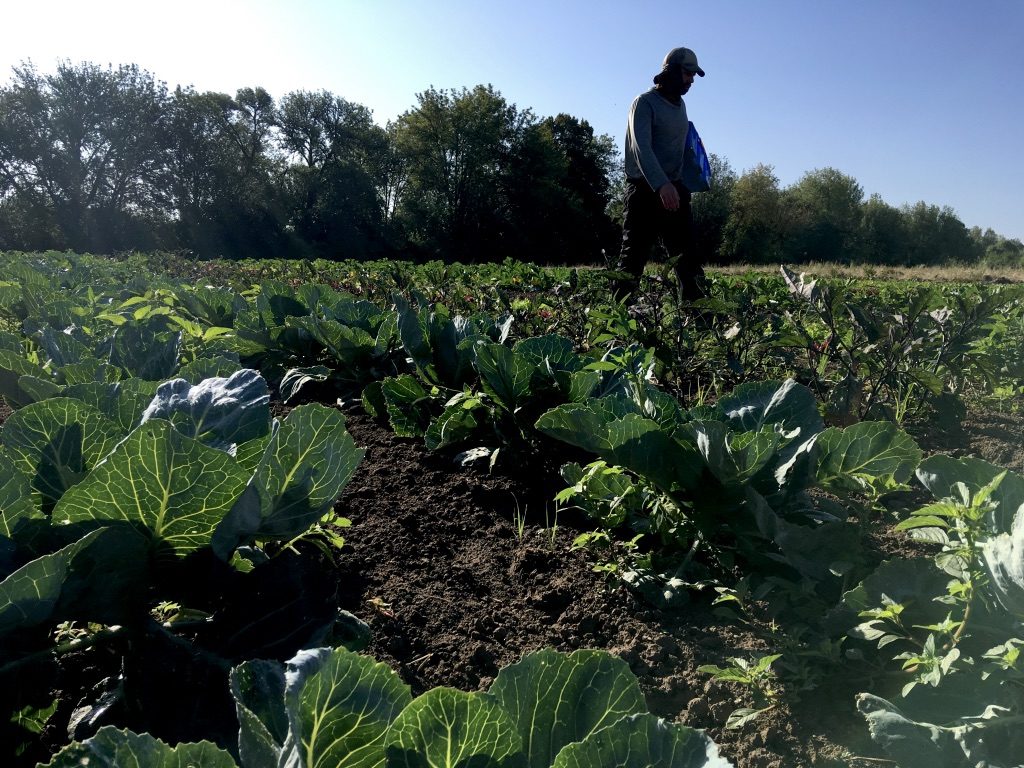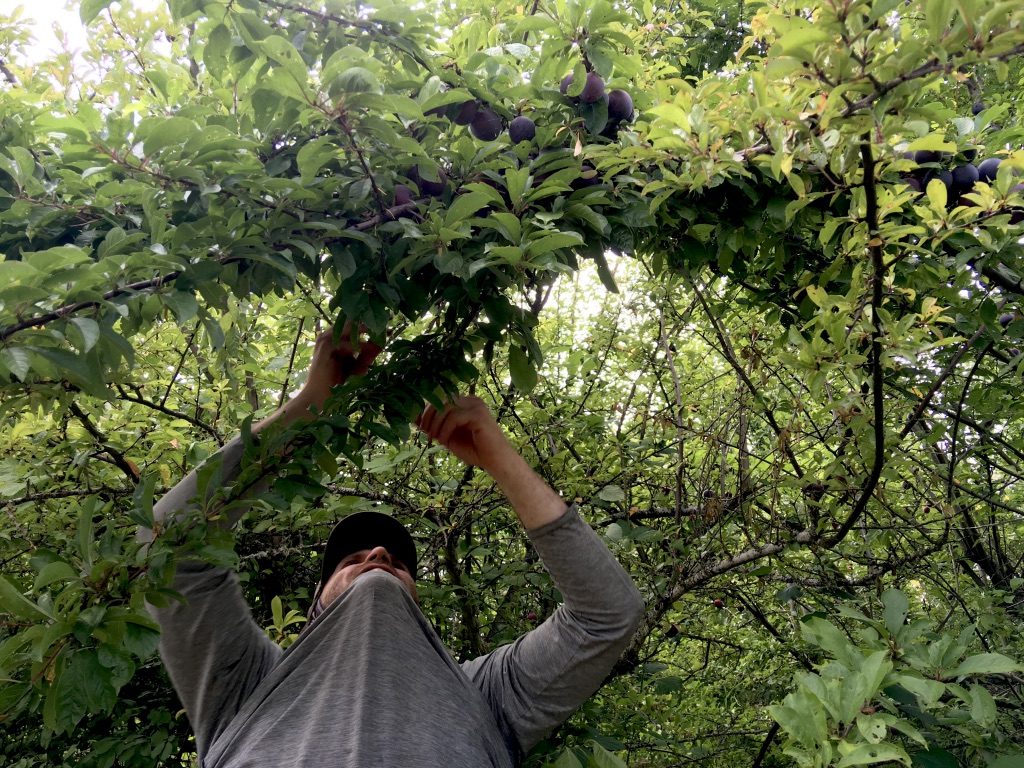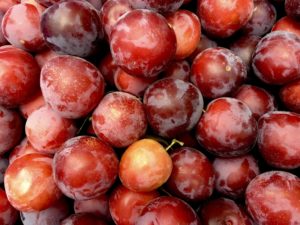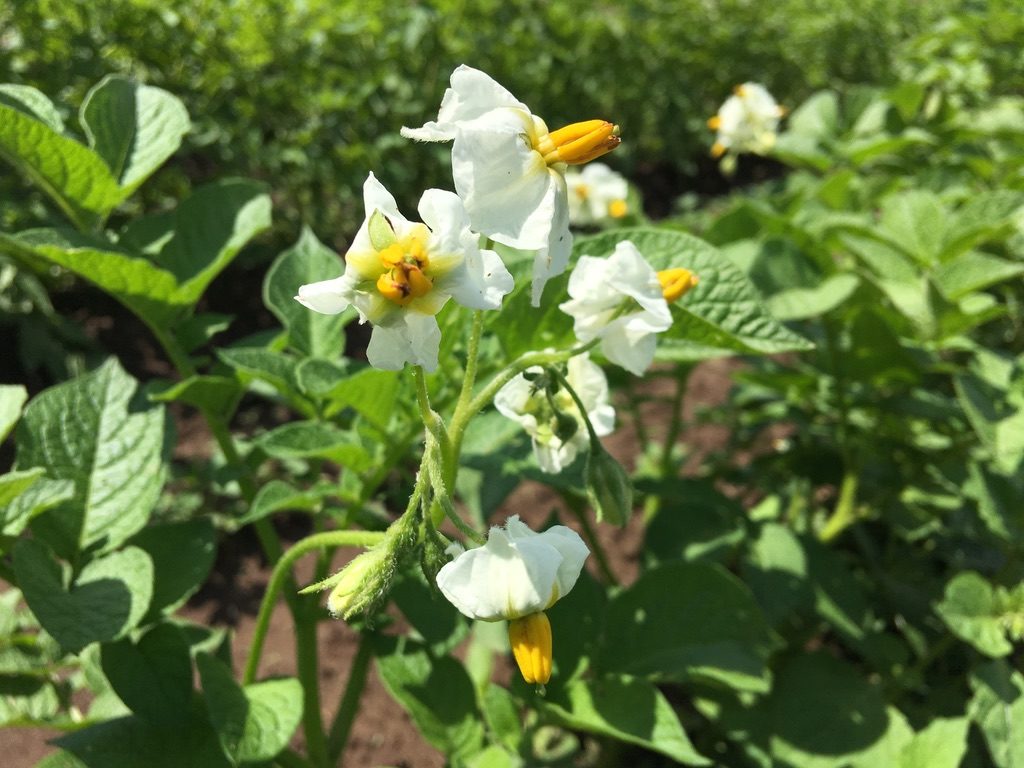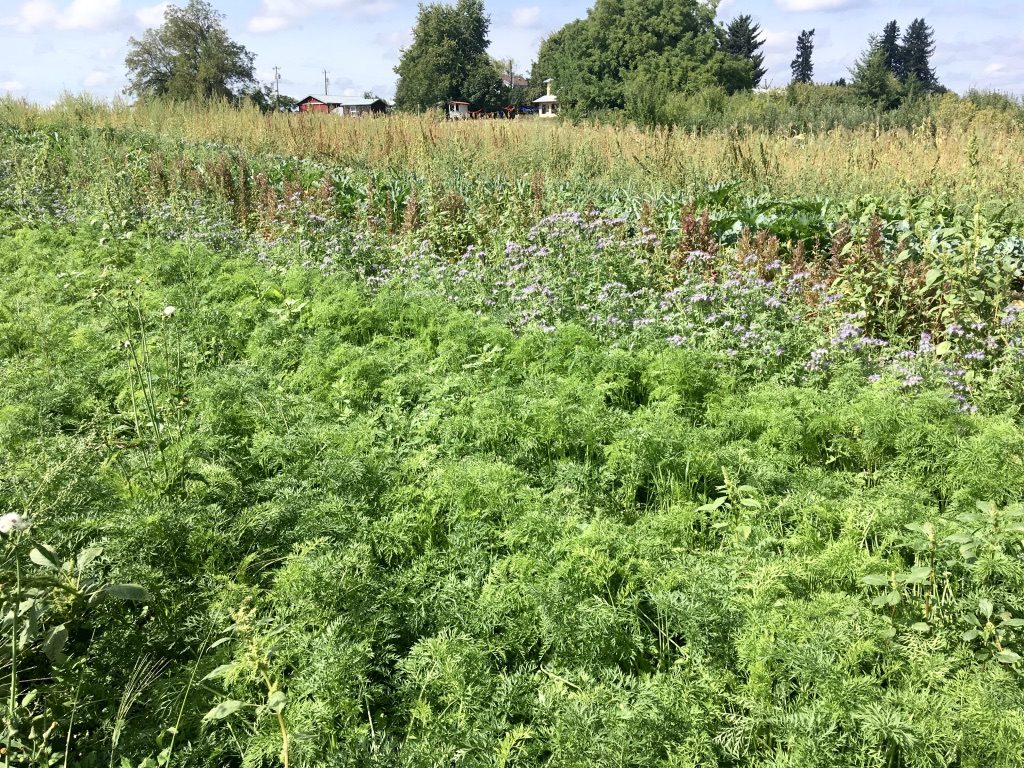
Our mature vegetables fields have very little bare ground, between the plants themselves and the inevitable weeds.
A week ago Tuesday, the kids and I went on our first official nature outing of the school year. Although we all spend time outside every day, we aim to hike once a week as a way to continue learning about nature and also just move our bodies! Last week we went to Airport Park, and as we walked the outer loop I was struck by how very dry everything looked. There was a layer of dust on all the foliage, and many of the plants were dried up to the point of looking dead — the snow berry shrubs especially had no visible green leaves, let alone white berries that are common this time of year.
This summer wasn’t especially dry or hot — pleasantly mild really — and yet seasonal drought is seasonal drought and with it comes stress for all kinds of living things. My own stress at the end of the summer usually comes from air quality. After fourteen summers of living here in the Willamette Valley, I love so much about my chosen home. I love the river that is the defining feature of the valley; I love the abundance of the soils; I love the people and living beings who also live here.
But I still do not love the dust! Some dust may be an inherent feature of the landscape and the region’s seasonal cycles, but much of it is the result of late summer agricultural practices. Notably last week I observed a lot of work in the bare floors of the hazelnut orchards, but combining late season seed crops can also kick up a ton of dust too. Sometimes as I drive to town, I can see plumes of dust miles ahead of me, at first looking like a vague haze in the sky spread over miles. As I move closer, I’ll see more definition until I eventually see the source: sometimes even just one tractor will be producing dust that hangs over many, many fields.
As we were driving home from the CSA pick-up last Thursday, Casey and I saw an extreme amount of dust floating across the road ahead of us, obscuring visibility for vehicles. As we drove closer, we saw two people driving off-road vehicles at high speeds through a recently cleared hazelnut orchard, kicking up opaque swirling waves of dust behind their tires.
If you don’t know, another way to categorize dust is soil erosion. “Dust” is not just made up of some kind of “extra” material that sits on the surface of the soil — it represents top soil itself, made light and free through the combination of dryness and tillage until it becomes air-borne. Some will land on other fields; some will land on foliage; some will travel far, far away (dust can travel around the world!). Soil is the word we use to describe the combination of particles in the context of where they were formed — in our case, the combination of clay and sand that makes up the material we dig in our fields. It’s also full of living organisms as well and has a particular structure native to each place where it’s been formed through many, many years of organic and inorganic processes.
“Dirt” is soil removed from context — like that dust that settles on cars and houses and greenhouse poly and tree leaves and in our lungs at the end of the summer. Dirt and dust certainly have the potential to reach the ground and become part of the soil again, but all the former structure and life has been stripped away by the time it takes to the summer air.
Knowing what I’m seeing and breathing at the end of summer does eventually make me long for a shift in the seasons (even though I love so much about summer!). My lungs are ready for fresher air, and I want to see a seasonal slow down in the air-borne soil loss in the valley.
So, when the rain began this weekend, I rejoiced! I knew that the air would be clean again for a period of time anyway. I also thought about those drought-stressed plants everywhere and smiled knowing that some of their stress will be eased too. We are heading into the season of senescence, but even now rain can make the difference between a plant surviving another year. I’ve also just loved the change and the drama of big downpours and occasional thunderstorm.
Although these are not without their damage too. Unfortunately the same conditions that can lead to air-borne dust erosion leave loose soil particles on the soil surface that can also be easily picked up by water and moved across the surface. Muddy rivulets in bare winter fields are another source of topsoil loss — a significant one in the Willamette Valley — and like dust turn life-giving soil into pollution (in this case the pollution entering surface water streams). Winter bare soils and run-off erosion often results in soil compaction too, making the topsoil layer less hospitable to future life than before (and resulting in even more run-off, as rain waters run across the soil surface rather than sinking in).
What is the solution to preventing all this soil loss and erosion? Is it a super complicated answer?
The answer is … plants. Except where humans make use of it for our own purposes, top soil does not lay open bare, exposed in nature. For one thing, open topsoil represents valuable real estate for any plants looking for a home! But also the healthiest structure of top soil (what is called good “tilth” in agricultural terms) is built through life: through the work of roots and fungal mycelia and bacteria and burrowing insects and mammals. A field with a well established cover of plants will not budge during a rain storm. No particles will flow off in muddy flows, even if the rain comes down hard enough to create standing puddles within minutes (as has happened this last week!).
Instead, the rain will follow the roots of the plants down in the soil. It will flow into vole tunnels and gopher burrows. It will fill the soil like a kitchen sponge and then very slowly drain down, down, down over subsequent days or months, seeping into the groundwater after being filtered through layers and layers of different sized particles of soil and subsoils. Healthy soils, with plant covers intact, make for healthy water systems. Which means more groundwater for irrigation; cleaner water in our streams; and topsoil that stays in place for generations to come.
Bare soil is considered a necessary part of agricultural practices today. We certainly use judicious tillage before planting our annual crops. However, even within this system of tillage, there are so many ways to reduce the potential negative impacts of these practices. Here on our farm, we start by using a tillage tool that retains much of the soil texture even when preparing the soil for planting. This “power harrow” works in plant matter while maintaining the existing soil strata — it does this with tines that don’t “spin” the soil (like a wheel), but instead “stir” it (like a spoon in a bowl). The different motion maintains different sized particles and soil life.
We also aim to have ground bare for as short a period of time as possible. In a way, bare soil is like an open wound. It can be healthy, but it needs to be carefully tended and it should be a temporary condition. For our annual crops to grow well, we do need to remove weeds (nature’s response to bare soil!) and try to foster the growth of our desired plants as much as possible. But honestly we’re okay with some weeds coming in as our crops get established, and we always sow cover crops after harvests are complete. When it rains hard in winter, we want our soil to stay in place. We also appreciate the gifts of plants to the soil: some plants make new fertility; others simply hold on to it (fertility can also be washed away by rains in bare soil). All plants add to the organic matter and healthy tilth of the soil.
Our farm is not perfect, by any means, and I don’t intend this newsletter to sound like boasting or suggest that we’ve figured it all out. But last week erosion was just so literally visible in the air all around us that I was contemplating it a lot. I also find myself genuinely befuddled that other farmers don’t seem to care — or, at least, don’t appear to be taking known steps to prevent such erosion from their own valuable fields. While I have a deep, spiritual reverence for top soil as an ecosystem all its own, from a very pragmatic standpoint, topsoil is a priceless asset for farmers.
This is of course the motivating premise behind the NRCS, the National Resources Conservation Services — our country’s institutional attempt to help farmers prevent erosion. The NRCS was founded almost 100 years ago, as a response to the infamous Dust Bowl disaster, and yet here we are today in 2019 with swirling dust in the air of the Willamette Valley.
Aside from the continued work of agencies like the NRCS and local Soil & Water Conservation Districts (SWCD), I’m not sure how to more effectively share the known solutions for preventing erosion and pollution. That’s a question that I think the Willamette Valley will need to discuss more as our population grows and the pressure on existing farm land increases. How can we simultaneously justify “protecting” it from development while watching its inherent assets blow away in the wind? I think Oregon’s land-use laws, which preserve farmland for farming, are a gift to farmers in this region. But the same laws also represent a responsibility. Oregon has said: yes, we value this work you do, and we will legally protect your access to it. But that tenure is an incredible privilege. Land-use laws represent a long-term vision for our landscape and community; we need to farm with a similar long-term perspective.
Today, the sun peeks between passing clouds and shines down on our fields through clean air! I will rejoice in this simple joy as we harvest for the CSA. Enjoy this week’s rain-washed vegetables!
Your farmer, Katie & Casey Kulla
~ ~ ~
Reminder! Final payments due this week! Please bring checks or cash to pick-up tomorrow. Let me know if you have any questions about the balance due on your account!
~ ~ ~
Upcoming fall dates: We’re now in the final third of the 2019 CSA season, so I wanted to make sure you know what’s coming up …
- Thursday, September 12 — Final CSA payment due tomorrow!
- Thursday, November 21 — Our final CSA pick-up of the year! (Week 33!)
- Tuesday, November 26 — Thanksgiving Holiday Harvest! (veggie list will be in final week’s newsletter and orders will need to be placed by Sunday evening)
- Friday, December 20 — Winter Holiday Harvest & Open House! (veggie pick-up and Open House at storefront — we’ll email veggie list week ahead of time! We’ll have some treats at the storefront if folks want to linger and visit!)
~ ~ ~
Meet this week’s vegetables:
- Concord grapes — These grapes have seeds! You can just crunch them up and swallow them or spit them out — we just like people to know ahead of time. “Old timers” on the island tell us this particular (clearly very old) grape planting is from cuttings carried on the Oregon Trail. If you’ve never had Concords before, you’re in for a treat — they are the flavor of grape.
- Melrose apples
- Pears
- Broccoli — Abundant, beautiful broccoli this week!
- Bell peppers
- Eggplant
- Tomatoes
- Carrots
- Beets
- Dinosaur kale — The dino kale is gorgeous right now! We’ve been eating it for breakfast a lot this week. This time of year, when the weather is warmer, we find the inner rib of the plant to be more “texture” than we prefer in our meals, so we just strip the leaves off and then chop them up. Delicious! I love the rich flavor of this particular variety of kale.
- Zucchini
- Spaghetti squash
- Potatoes

